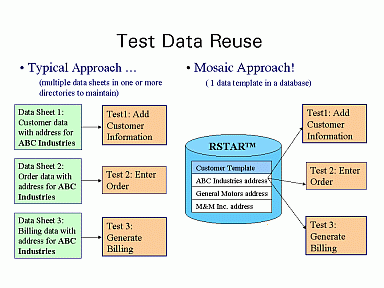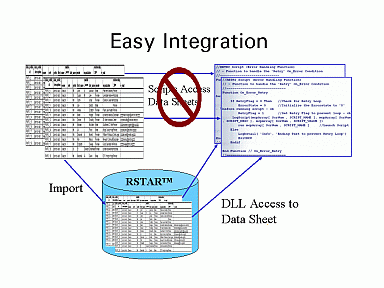|
Mosaic’s RSTAR™ Object-Driven Testing Framework Why Object-Driven Testing? Testing by its nature is highly redundant so the benefits from maximizing reuse are real and significant. Not convinced? Watch our video – Why Full Reuse™? Then – let us show you how to achieve the available benefits! Especially, if MS Word or MS Excel is still your test planning tool, let us show you how to move to a more powerful yet affordable framework! Mosaic has combined the benefits of data-driven and keyword-driven testing utilizing the power of a database repository to implement an object-driven framework. The key component is reusable test data. As shown in the figure, three sample tests all reference ABC industries – test data replicated across three separate sheets. This is a common occurrence that can be easily improved by reusing the data in an object-driven framework. Object-Driven Framework Objectives The objectives of Mosaic’s object-driven approach are to:
How the Objectives are Achieved These objectives are achieved using the following techniques:
The unprecedented level of reuse is enabled by the ability to reuse test data and the ability to dynamically bind test data to tests at execution time. Framework Components Mosaic’s testing framework includes the following components:
Migration Path Mosaic understands that you may have a significant investment in your current testing assets. You can start achieving the benefits of reuse without wholesale changes. We recommend the following approach: Step 1: Import your data sheets into RSTAR™. Your test scripts can use our DLLs to access the data from RSTAR™. Benefit: You will have your test data in one centrally accessible and maintainable place. Step 2: For new tests, and where there is a benefit for existing tests, normalize your test data around the application, not the test. Benefit: You will begin to get the benefits of reusable test data. The data can be used by all the tests that need it. Step 3: Begin designing tests to be reusable. Benefit: You will get the benefits of Full Reuse™. There will be fewer test assets to develop and maintain. Your tests will be positioned for automation.
|
©2009-2012 Mosaic, Inc.


